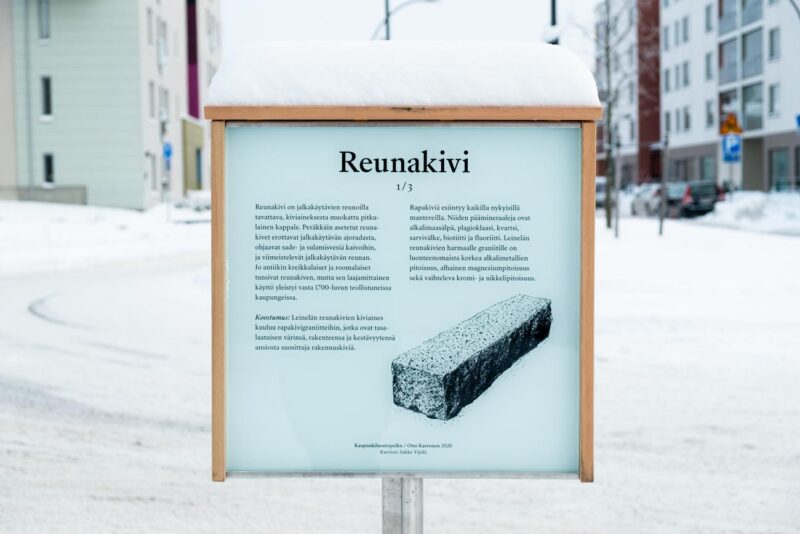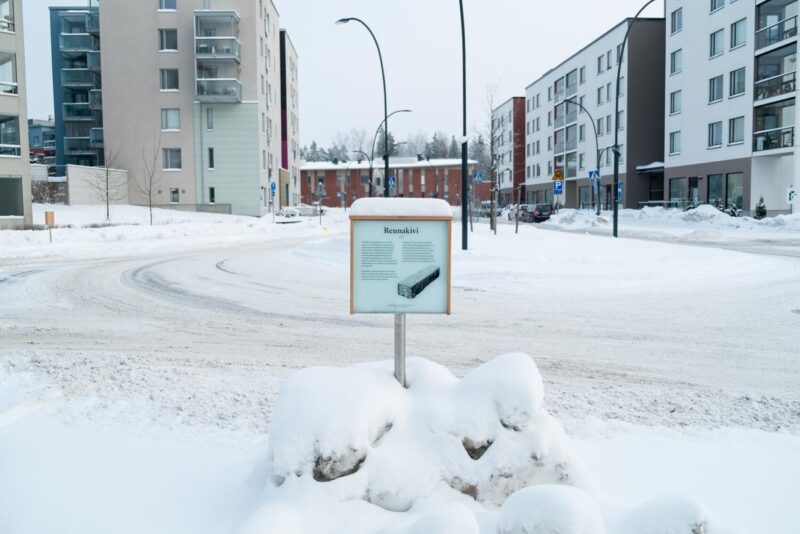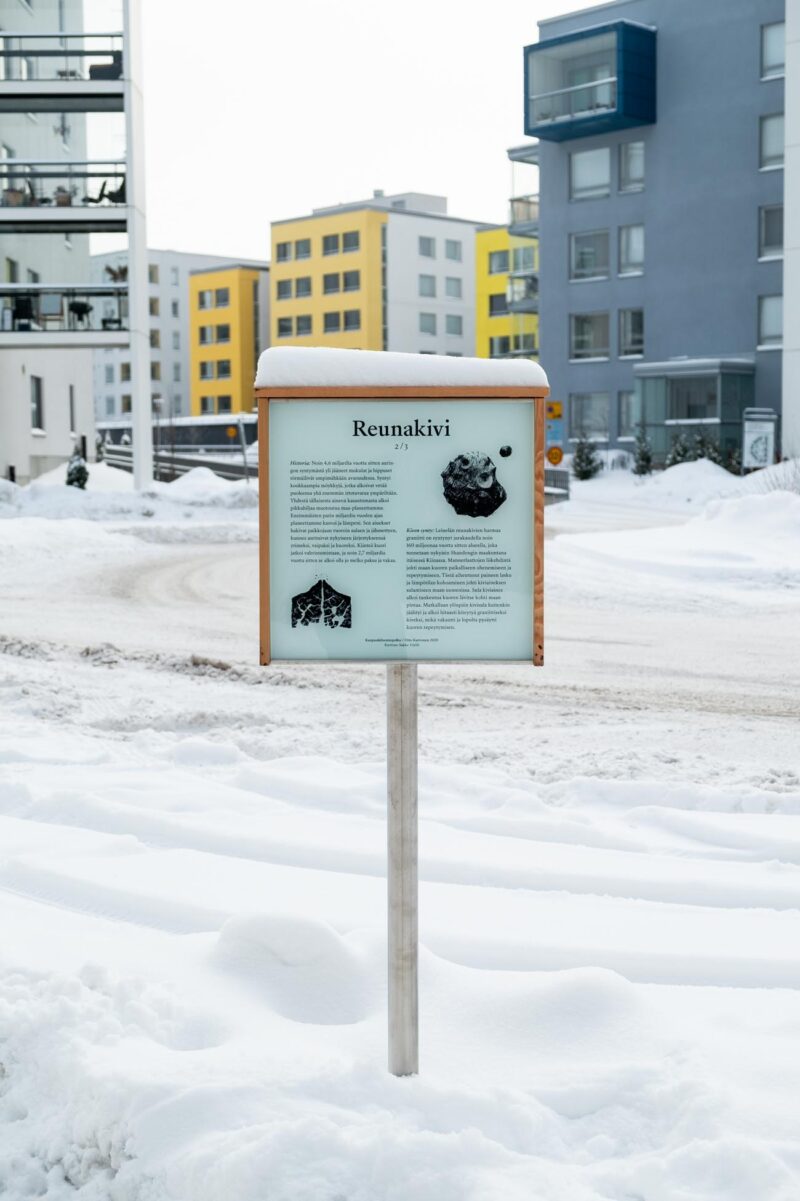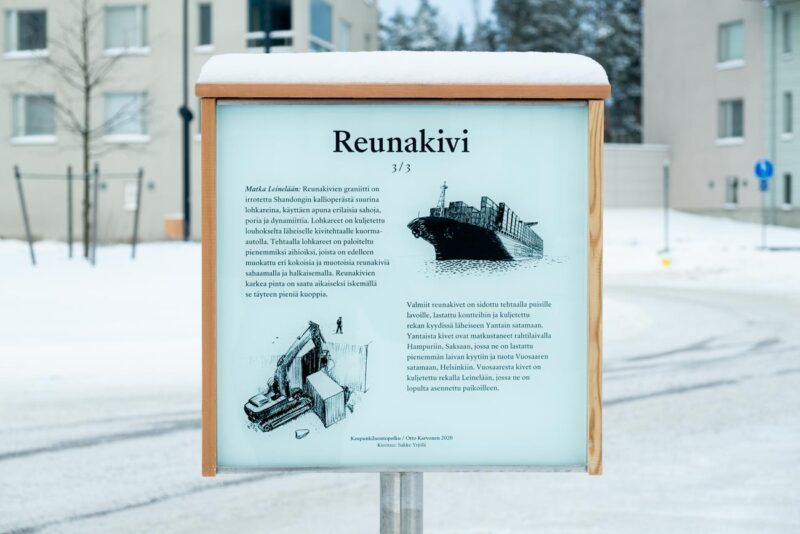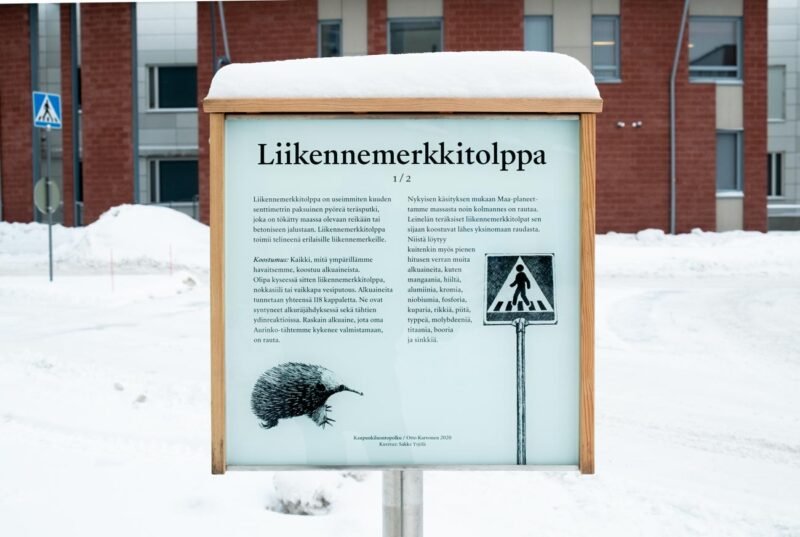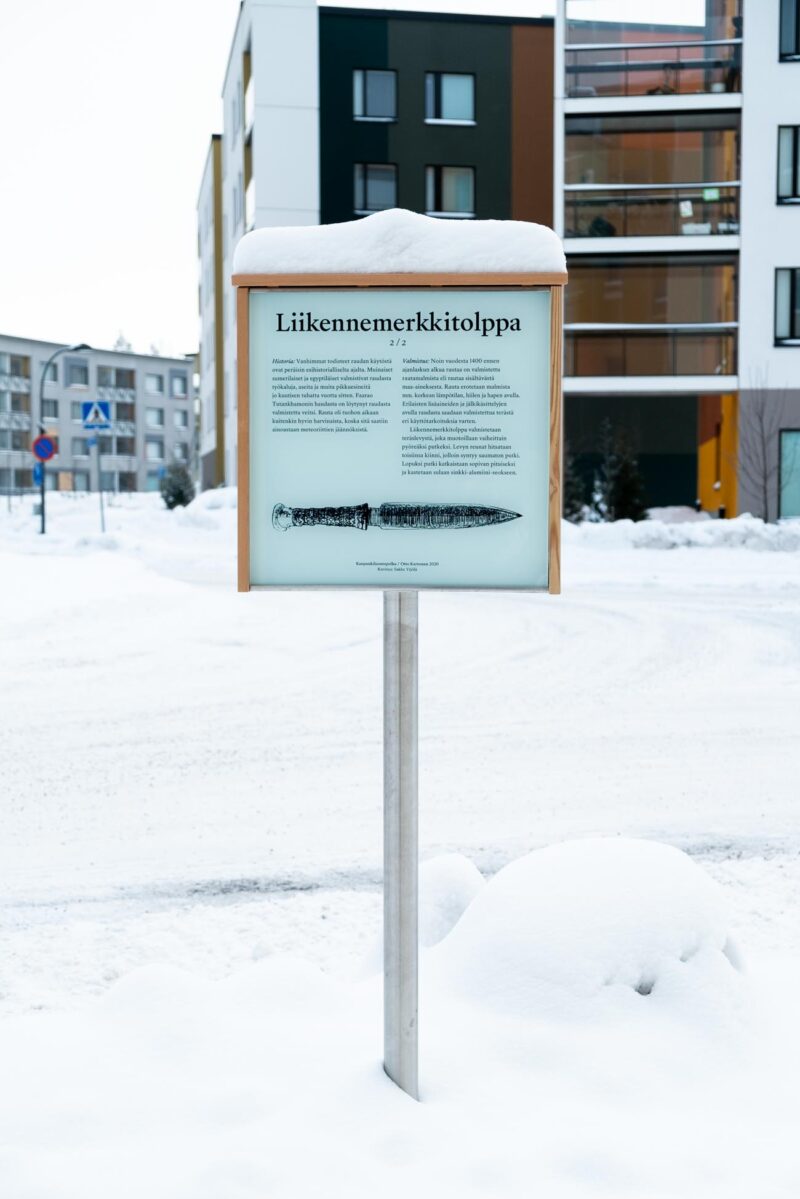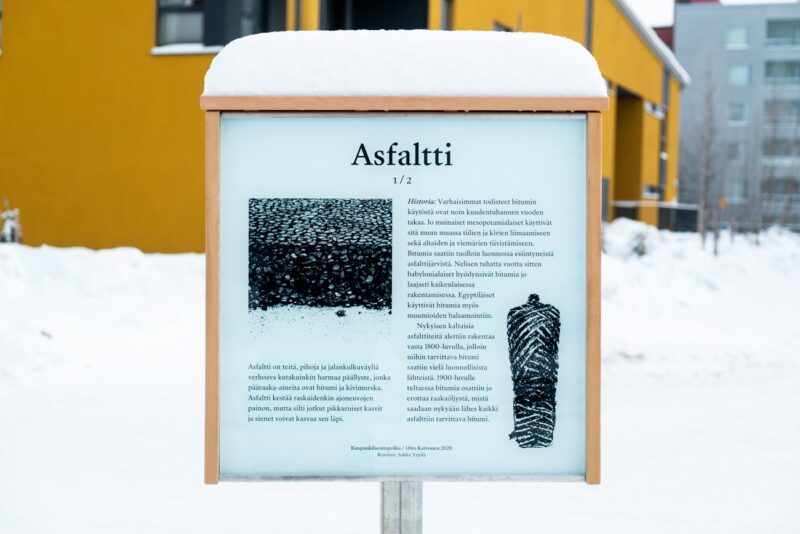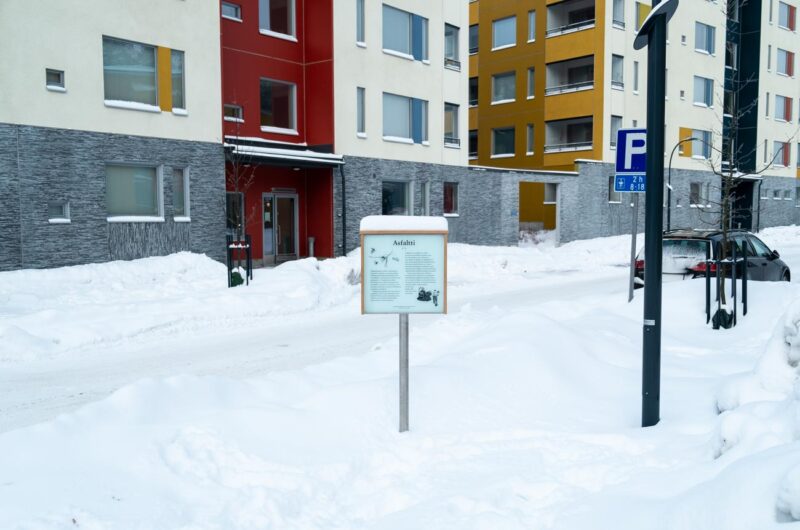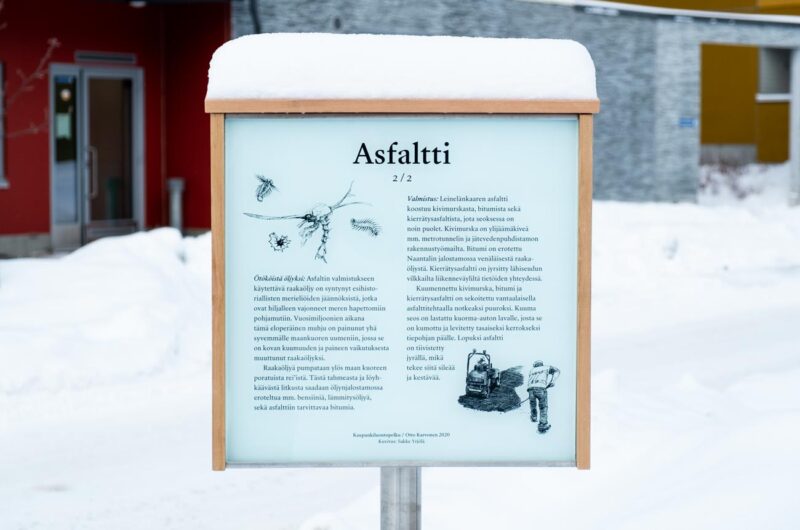Public commission
Leinelä, Vantaa
2020
The work consists of nature trail signs placed along the sidewalks of Leinelä neighbourhood, introducing three common elements of the street landscape: curbstone, asphalt, and traffic sign post.
The starting point of the artwork is the street, an extremely mundane and uniformly gray entity that extends its tendrils everywhere in the urban fabric. Streets and their basic elements rarely evoke any particularly overflowing passions in us. But who knows what interesting things might be hidden beneath our feet and before our eyes? Even in ancient times, it was a big deal when a palace was built from exotic stones shipped from across the seas. Similarly, it’s quite a remarkable thing that in Leinelä, Vantaa, one can stroll alongside 2,5 billion years old granite imported all the way from China.
The seven informational nature trail signs are scattered along the sidewalks of Leinelänkaari and Leineläntie. The illustations on the signs were drawn
by Sakke Yrjölä.
Scroll down for an example of the texts on the signs.
Example of the text: Curbstone
Curbstone is a long piece of stone commonly found at the edges of sidewalks. Placed one after another, curbstones separate the sidewalk from the street, guide rainwater to drains, and support and finish the edge of the sidewalk. The concept of curbstone was known to ancient Greeks and Romans, but its widespread use became common only in the industrialized cities of the 18th century.
The material of the curbstones in Leinelä belongs to rapakivi granites, which are popular building stones worldwide due to their consistent color, structure, and durability. Rapakivi is found on all current continents. Its main minerals include alkali feldspar, plagioclase, quartz, hornblende, biotite, and fluorite. The gray granite of Leinelä curbstones is characterized by a high concentration of alkali metals, low magnesium content, and varying levels of chromium and nickel.
Origin:
The history of curbstone dates back approximately 4.6 billion years, when the remnants and particles left over from the birth of the sun collided and merged in space. The resulting larger clumps gradually began to attract more loose material around them. One such accumulation of matter eventually formed our planet Earth. For the first couple of billion years, the planet grew and warmed. Its components found their places by alternately melting and solidifying until settling into their current order as the core, mantle, and crust. The solid crust continued to strengthen, and about 2.7 billion years ago, it became quite thick and stable.
Formation of the Stone:
The gray granite of Leinelä curbstones was formed during the Jurassic period approximately 160 million years ago in the area now known as Shandong province in eastern China. The movement of tectonic plates led to local thinning and fracturing of the Earth’s crust. The resulting decrease in pressure and rise in temperature caused the rock material to melt in the Earth’s mantle. The molten rock began to penetrate the crust towards the surface. However, on its way up, the molten rock cooled and slowly crystallized into granite, stabilizing and eventually stopping the fracturing of the crust.
Journey to Leinelä:
The granite of the curbstone has been extracted from the bedrock of Shandong in large blocks using various saws, drills, and dynamite. The blocks have been transported from the quarry to a nearby stone factory by truck. In the factory, the blocks have been cut into smaller blanks, from which curbstones of various sizes and shapes have been further shaped by sawing and splitting. The rough surface of the curbstone has been achieved by striking it full of small pits.
The finished curbstones have been bound to wooden pallets at the factory, loaded into containers, and transported by truck to the nearby Yantai port. From Yantai, the stones have traveled by cargo ship to Hamburg, Germany, where they were loaded onto a smaller ship and brought to Vuosaari harbor in Helsinki, Finland. From Vuosaari, the stones have been transported by truck to Leinelä, where they were finally installed in place.

